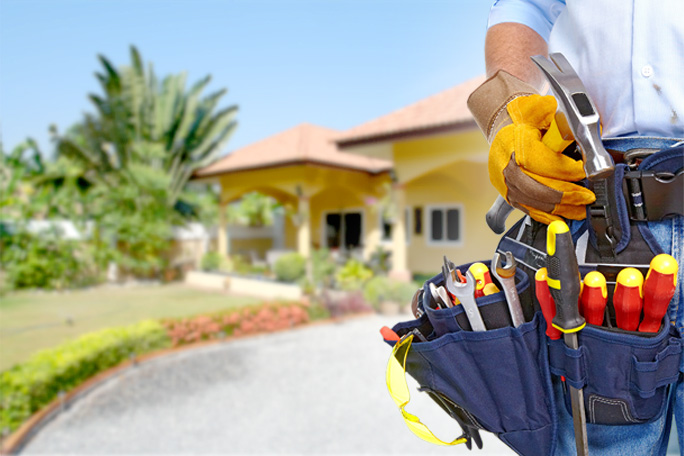
Roscoe Management (RPM), a multifamily property management firm, is one the largest in Texas. It specializes on rental management and offers move-out assistance that is hassle-free. RPM has locations in Dallas and Houston as well as Atlanta, San Antonio and Denver. The main headquarters of the company is located in Austin. The company offers multifamily management as well as commercial property management. Although the company's primary focus remains in the South of the United States, it recently expanded into Arizona.
RPM will merge Phoenix's Maverick Residential. The new company will offer third-party property management services for multifamily units in 17 US states. They will combine to have over 1,800 employees. The RPM brand will be used by the combined company. The combined companies will own more than 84,000 apartments in the United States, with 49,000 units in Texas. They will also have nine national offices.

RPM will merge with Maverick to create one of America's largest third-party providers real estate services. RPM will be managing more that 200 communities with over 4,900 homes, and Maverick will have more then 1,750 apartments. With the exception of a new regional office in Phoenix, both companies will continue to operate their current offices. The combined company will employ more than 1,800 people, including 500 employees in the Austin office. Upon completion of the merger, RPM will be the largest provider of property management services in the nation.
B/K Multifamily Services, which has managed more that 40,000 units in total since 1998 has a solid track record with institutional investors and funds. B/K Multifamily Services has earned a solid reputation for managing affordable homes. According to the National Multifamily Housing Council 2020 rankings, it was the 42nd-most popular apartment manager in the country.
RentCafe has been integrated to many Roscoe homes as part of an effort make residents' lives easier. Residents can access portals to pay rent and submit maintenance requests online. It also allows for prospects to apply online. These websites convert leads, help applicants go through the sales process faster, and increase cash flow. RentCafe's websites include social media tools that encourage community interaction and convert leads.

If you are searching for a job as a property manager or want to learn more about the company, you will find information about its culture, training opportunities. Compensation and working conditions. You can also find reviews that provide insight into the culture, people, and working environment of the company. Roscoe's property management can help you make a decision about whether or not to apply.
FAQ
Does a handyman make suggestions about how to improve my home?
Absolutely! A handyman is skilled in all aspects of home maintenance and repair. He or she is trained in what repairs are needed and what does not. Ask for help when you need it.
Why hire a handyman when I can do it myself?
It saves you time and money to hire a handyman. This saves you time and money. You can also hire a handyman who has the right equipment and supplies to do the job right.
What should I choose: hourly or per-project?
It really comes down to personal preference. Some people prefer paying by the hour to know exactly how much their handyman charges. Others prefer to pay for each completed project since they may have multiple jobs simultaneously. Either way is fine.
Who will take care of my handyman job?
If you are looking for someone local to perform a one-off job, like replacing a light fixture or fixing a leaky faucet, you won't find a better price than a professional handyman. You might also consider hiring a handyman to do multiple jobs such as installing floor tiles or repairing your roof.
Handyman Services, a handyman service, can provide you with ongoing support like maintenance.
Where are handymen?
There are thousands and thousands of handymen throughout the U.S. But almost none of them started their career as contractors. Most of them started out as a tradesman. They learned the craft through apprenticeships. As a result, they often possess great skill sets and a wealth of knowledge, which makes them very valuable assets to any company.
Statistics
- “Once the pandemic hit, that number fell to about 20%.” (inquirer.com)
- With a strong housing market, the handyman and general maintenance worker industry are expected to grow by nearly 10% in the next decade. (housecallpro.com)
- According to the U.S. Bureau of Labor Statistics, in May 2020, there are 1,357,630 handymen employed in the U.S.. (angi.com)
- Mila keeps a commission of 20% for each completed service performed by Friends and charges various service fees regarding work done by Pros. (appjobs.com)
- An estimate was that in 2003, the market for home maintenance and repair spending was up 14% 2001 to 2003. (en.wikipedia.org)
External Links
How To
How to Replace Broken Tiles
Step 1 – Remove the tiles.
You can remove the old tiles from your floor and save them. These tiles will be useful later on, so you'll need to keep them intact. You can note the parts that are missing or damaged so that you can find replacements.
Step 2 - Select New Tiles
You can take a look at the different options for tile replacement.
-
You should find a similar tile to the one that you've just taken out.
-
To find the matching piece, use the measurements that you took while removing the tile. This will make it easy to get the correct size without having again to measure.
-
Find colors, patterns textures, sizes and shapes in all possible combinations.
-
Consider what grout you prefer to use. Some people prefer to use a single color, while others love mixing it up.
-
Choose a tile that resists moisture.
-
Also, think about where you want to place your new tile. This will help you save time and money.
-
Once you've chosen your tile, order it online or call your local Lowe's store to place your order.
Step 3 – Install the new tiles.
Install your tiles using the same method you used before. Make sure they are aligned correctly so that they fit together perfectly.
Step 4 - Clean up
Clean up any debris on the floor before you apply the last layer of protective material.
This will prevent dirt and dust from settling into the cracks between the tiles that could cause mold.
Step 5 - Sand Down the Floor
After you have cleaned everything, sand the floor to remove any particles that were left from the previous step.
Step 6 - Close the door
After the floor has been smoothed, you can apply protective coatings to the tiles. It's important to wait until this point because wet paint can stain the surface of the new tiles.
Remember, you can always use a product called "damp-and-dry" on your floors to help protect against stains.
It will not address all problems that may arise once your tiles have been installed. If you have children, an anti-slip coating may be a good idea.
Finally, do not forget to keep the protective sealer on for several more weeks before you move back into your home.